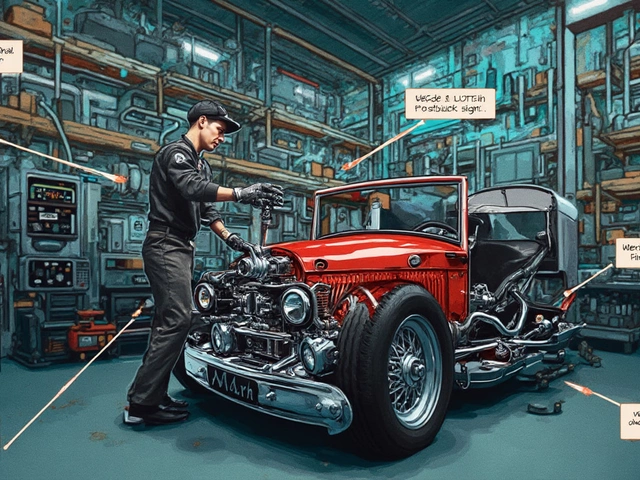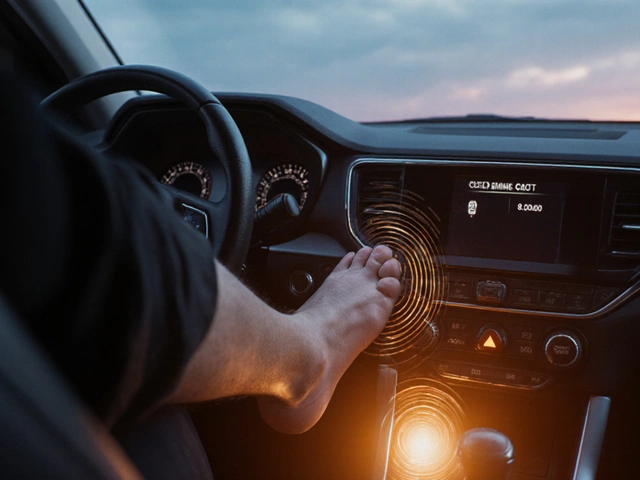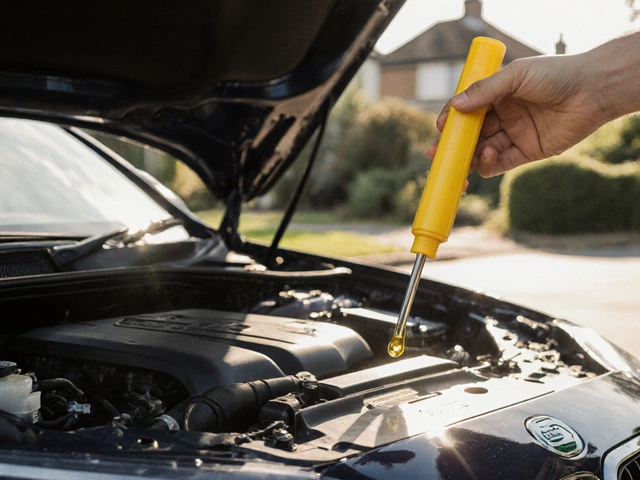Radiator Health Checker
Imagine cruising down the highway when the temperature gauge jumps into the red. You glance at the dashboard and wonder: can my car keep moving with a bad radiator? The short answer is no - not for long. A failing cooling system can turn a routine drive into a costly engine repair fast. Below you’ll learn how the radiator works, the warning signs to watch for, why pushing a car with a damaged unit is risky, and what practical steps you can take before it becomes an emergency.
Quick Takeaways
- A bad radiator will cause the engine to overheat quickly, especially in traffic or hot weather.
- Typical symptoms include steam, coolant loss, a high temperature gauge, and sweet‑smelling puddles.
- Driving with a compromised radiator can lead to warped cylinder heads, blown head gaskets, or complete engine failure.
- Temporary fixes (adding water, sealing leaks) buy you only a few miles - they’re not long‑term solutions.
- Replace or professionally repair the radiator as soon as you notice consistent overheating.
How a Radiator Keeps Your Engine Cool
When you first hear the word Radiator is a metal heat‑exchanger that sits at the front of the engine bay. It transfers heat from the hot engine coolant to the surrounding air, preventing the engine from reaching damaging temperatures.
Coolant, a mixture of water and antifreeze, circulates through the engine’s passages, absorbing heat. It then flows to the radiator where the Radiator Hose carries the heated fluid into the radiator core and returns cooled fluid back to the engine.
Two other crucial components keep the loop moving: the Water Pump pressurizes and pushes coolant through the system, and the Thermostat opens at a set temperature to allow coolant to flow to the radiator. When everything works, the engine stays within a safe temperature range (typically 190‑220°F/88‑105°C).
Tell‑tale Signs of a Bad Radiator
Before the engine overheats, the cooling system usually gives you clues. Look out for these symptoms:
- Steam or a sweet smell coming from the front of the car - coolant vapor is often mistaken for water vapor.
- Visible Coolant Leak as puddles of pink, green, or orange fluid under the vehicle.
- A rising Temperature Gauge that moves into the red zone even at idle.
- Overheating alarms or warning lights flashing on the dash.
- Heated engine bay - you can feel the heat radiating from the radiator housing after a short drive.
If you notice any of these, stop the car safely, let it cool, and inspect the cooling system.
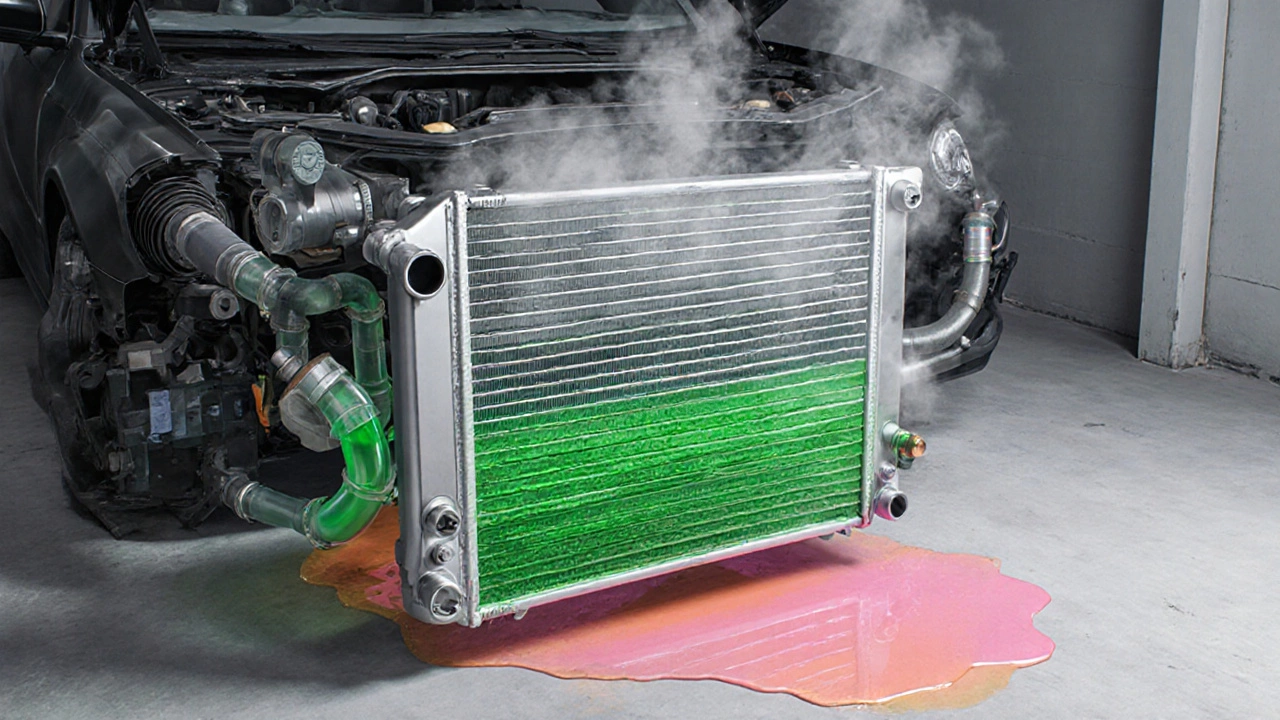
Can You Keep Driving with a Bad Radiator?
The temptation to “push on” is strong, especially if you’re a few miles from home or a repair shop. In reality, a malfunctioning radiator reduces the system’s ability to shed heat. The longer you run the engine, the hotter it gets, and the risk of catastrophic damage climbs dramatically.
Here’s what typically happens:
- Minor Leak: Coolant level drops slowly. The engine may run a few more miles before the temperature spikes.
- Clogged Core: Heat transfer is severely limited. Even at idle, the engine can overheat within 5‑10 minutes.
- Broken Radiator: No cooling at all. The engine can seize in under a minute under load.
When the engine overheats, metal parts expand beyond design tolerances. A warped cylinder head or a blown head gasket can let coolant mix with oil, leading to expensive repairs that often exceed the cost of a new radiator.
Temporary Measures - When You Have No Immediate Help
If you’re stranded and a tow isn’t an option, a few stop‑gap actions can buy you limited mileage:
- Coolant Top‑Up: Once the engine has cooled completely (wait at least 30 minutes), add a 50/50 mix of water and antifreeze to the reservoir. This restores pressure and helps carry heat.
- Seal the Leak: Commercial radiators sealants can plug small pinhole leaks for a handful of miles. Follow the product instructions precisely.
- Turn Off the AC: The air‑conditioning system adds extra load to the engine. Running with the windows down reduces heat buildup.
- Drive Lightly: Keep RPMs low and avoid stop‑and‑go traffic. Short trips in cool weather are less risky.
Remember, these tricks are temporary. They do not fix the underlying fault, and driving beyond a few miles puts the engine at high risk.
When to Replace or Repair the Radiator
A radiator usually lasts 8‑12 years or 100‑150k miles, but corrosion, road debris, and age can shorten its life. Replace the unit if you notice any of the following:
- Persistent coolant loss despite a sealed system.
- Visible rust, cracks, or bulges on the radiator core.
- Overheating even after topping up coolant and flushing the system.
- Engine temperature spikes immediately after a cold start.
Professional repair options include:
- Radiator Flush: Clears blockages and removes old coolant residues.
- Leak Repair: Welding or using epoxy for small cracks.
- Full Replacement: Best choice when the core is corroded or severely damaged.
After any service, always bleed the cooling system to remove air pockets - trapped air can cause hot spots and false overheating warnings.
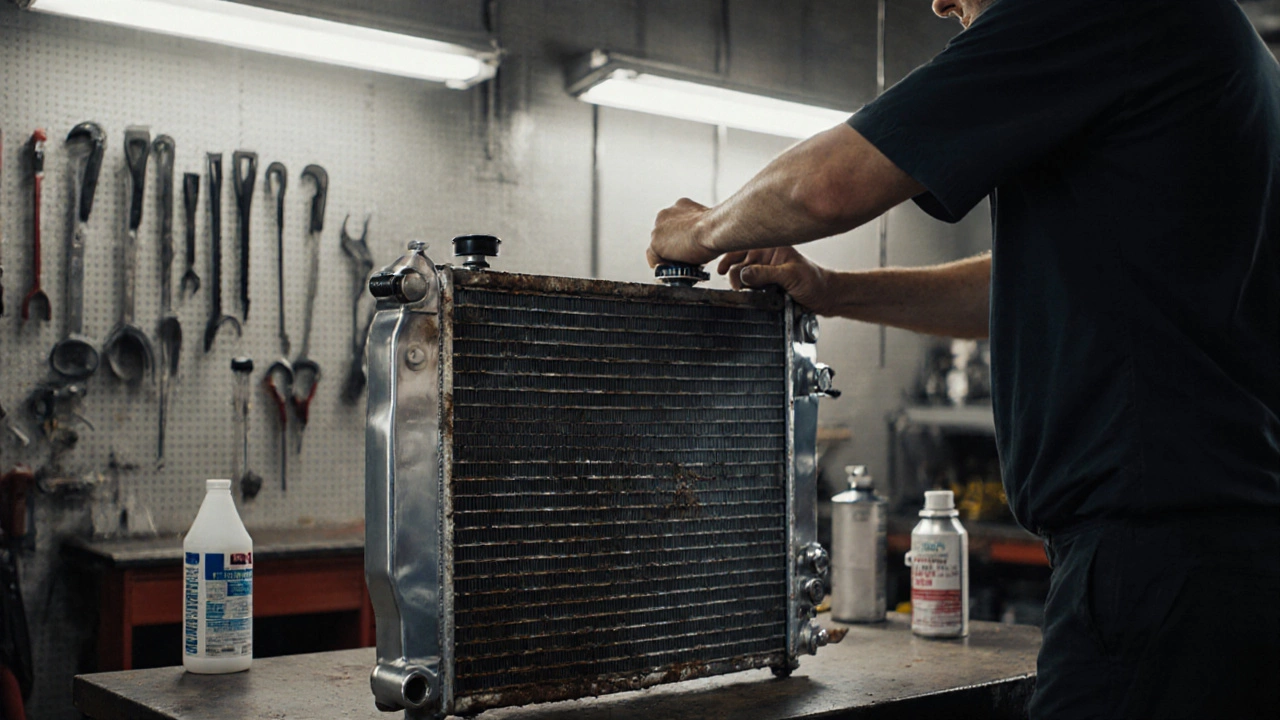
Preventing Radiator Problems
Good habits keep the cooling system healthy and extend radiator life:
- Check coolant level and condition every month; replace every 2‑3 years.
- Inspect hoses for cracks, swelling, or brittleness during oil changes.
- Maintain the radiator’s exterior - remove bugs, mud, and debris that can block airflow.
- Use the correct coolant type for your vehicle (often specified in the owner’s manual).
- Flush the system according to manufacturer intervals to prevent sludge buildup.
By staying proactive, you’ll notice issues early and avoid the danger of driving with a compromised cooling system.
Comparison of Common Radiator Issues
| Symptom | Likely Cause | Urgency |
|---|---|---|
| Steam from front of car | Coolant leak in radiator core or hose | High - stop and inspect |
| Temperature gauge climbs slowly | Clogged radiator fins | Medium - clean or flush soon |
| Engine overheats within minutes | Severe radiator rupture or total blockage | Critical - do not drive |
| Coolant level dropping daily | Small pinhole leak or faulty cap | Medium - repair ASAP |
| Sweet smell with no visible leak | Internal leak (head gasket) - radiator may be symptom | High - professional diagnosis needed |
Frequently Asked Questions
What does the temperature gauge show when the radiator is failing?
The gauge will rise toward the red zone faster than normal, often flickering or staying high even after the car cools down. This is a clear sign the coolant isn’t being dissipated properly.
Can I mix water and antifreeze in an emergency?
Yes, a 50/50 mix is acceptable for short‑term use. Make sure the engine is completely cool before opening the coolant reservoir to avoid burns.
How often should I flush the radiator?
Most manufacturers recommend a flush every 30,000‑50,000 miles or every 2‑3 years, whichever comes first. Harsh climates may require more frequent service.
Is a cracked radiator repairable?
Small cracks can sometimes be welded or sealed with epoxy, but the repair is often temporary. Replacement is usually the safest long‑term solution.
What other components can cause overheating besides the radiator?
A stuck thermostat, failing water pump, clogged heater core, or a malfunctioning coolant temperature sensor can all raise engine temperature. Always check these parts if the radiator appears fine.
Bottom line: a car with a bad radiator isn’t worth the gamble. Spot the signs early, avoid long drives, and get the cooling system repaired or replaced promptly. By staying on top of coolant levels, hose condition, and radiator health, you’ll keep your engine humming and your wallet from taking a hit.


